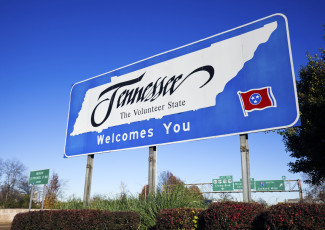FAFSA Changes Expected to Affect State Aid Programs
By Dennis Pierce
January 29, 2016
New rules create an “unnecessary barrier” for community college students and could require more work for some financial aid administrators.
The U.S. Department of Education plans to change states’ access to data from the Free Application for Federal Student Aid (FAFSA) beginning in 2017. But some state leaders fear this change will make it harder for them to administer their state aid programs, which could have a trickle-down effect on community college students and the financial aid officers who serve them.
Under the current policy, state agencies that provide grants and financial aid have access to the full list of colleges that students indicate on their FAFSA, including the order in which the colleges are listed. State officials have found that students are most likely to attend the college listed first on their forms, often by a wide margin — so administrators use that information to plan their state aid programs accordingly.
“Students in Oregon community colleges generally end up attending the first school they list more than 90 percent of the time,” says Bob Brew, executive director of Oregon’s Office of Student Access and Completion.
Beginning with the FAFSA for the 2017–18 school year, however, state agencies no longer will have access to the order students list their college choices. States will continue to get the full list of colleges that students indicate on their application, but the U.S. Education Department will randomize the order in which schools are listed.
State officials won’t know whether students are planning to attend colleges for which they might be eligible for state aid — a problem that particularly affects states with community college scholarship programs.
FAFSA problem in Tennessee
The randomization of the school list “may have a significant impact on the Tennessee Promise scholarship and our other state programs,” says Tim Phelps, associate executive director for Tennessee’s grant and scholarship programs.
Tennessee uses the information on the FAFSA to determine whether students are eligible for Tennessee Promise scholarships, which pay for any portion of the tuition to a state community college that is not covered by federal aid. “We typically make an award to the first eligible Tennessee institution listed,” Phelps says.
But under the new policy, if a student lists a four-year college or university on the FAFSA — and this institution comes up first in the randomization process — state officials wouldn’t know the student plans to attend a community college unless there is additional follow-up.
The change “creates an additional, unnecessary barrier for students and parents, and it creates additional work for financial aid administrators,” Phelps said.
Challenges in Oregon
Oregon, which offers its own Promise scholarship program for community college students, faces similar circumstances.
“Randomizing the FAFSA school list will definitely affect both Oregon Promise and our state-need grant, the Oregon Opportunity Grant,” Brew says. “Once the school lists are randomized, we will have to reprogram at least one if not both applications to get a clear measure of student intent — and we have less than a year to come up with a fix. We’ll also have to seriously consider creating a separate OOG application to collect a few data elements that we … will no longer receive from FAFSA records.”
While these problems might seem simple enough for state leaders to solve, introducing further complexity into the application process for state aid programs creates more potential for errors — which could result in some students slipping through the cracks.
Responding to concerns that students might be denied admission if colleges knew the other schools to which they were applying, the Education Department stopped providing colleges with the full list of schools on a student’s FAFSA as of Jan. 1. But state leaders argue that no such disadvantage exists in sharing students’ preferences with their own agencies.
The policy change “appears to try and solve a problem that doesn’t exist,” Phelps says. “I have not read or heard one valid reason for masking the FAFSA school list order to state agencies.”
He adds, “We are making great strides by allowing students and parents to complete the FAFSA earlier and by using prior-prior year tax information starting in 2016–17. However, masking the FAFSA school list order to state agencies negates some of the positive effects these changes will have.”







